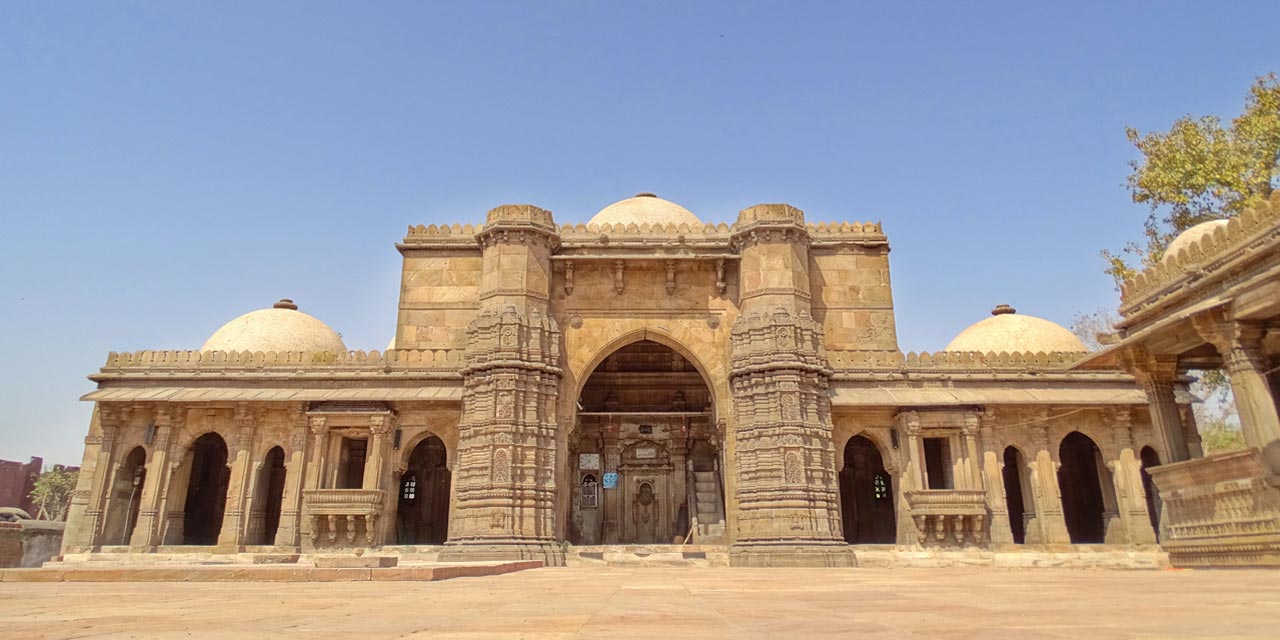Dada Hari Ni Vav Ahmedabad Entry Fee
- No entry fee
Dada Hari Ni Vav Ahmedabad Phone
079 2397 7200
Rating:  | 4/5 stars
| 4/5 stars
Based on total 21 reviews
Dada Hari Ni Vav Ahmedabad Address: Haripura, Asarwa, Ahmedabad, Gujarat, 380016, India
Gujarat is one of the most vibrant and colorful states of India and all its cities represent the culture and heritage of the state elaborately. Ahmedabad is one such city which is a true reflection of Gujarati culture. Right from authentic Gujarati cuisine to the sightseeing places, everything draws tourists to this place from all over the world in large numbers. The city is dotted with malls and shopping complexes but there is another part of the city that is dotted with architectural delights and places that must be on your visit list if you happen to be in Ahmedabad.
Some wonders of the world do not make it to the top seven but they are nonetheless worth a visit at least once in your lifetime. They could have a rich history attached to them, could be architectural wonders or could be both and Dada Hari ni Vav in Ahmedabad is one such place. In the quiet neighborhood of Asarwa village, this stepwell is like a hidden gem of the city.
Vav means a step well and Gujarat is known for its iconic stepwells, right from the ones in Baroda to those in Patan. There are almost 120 stepwells in the state. These stepwells were used to store water with the steps around it to make it easily accessible. The reason behind building these stepwells was the climate of Gujarat. The climate here has always been semi-arid and the unpredictable and sometimes scanty rainfall.
Long before modern means of storing water were developed, these stepwells were the most efficient way of storing water for the people of the city. They were also used as resting places by travelers who used to take a break from their journey at these stepwells. It was here that they refilled their supply of water and rested on the steps.
These stepwells were not just a tank with steps and filled with water. They are, in fact, a work of art, showcasing excellent craftsmanship and depicting the heritage of the city. They are truly symbolic of the culture prevalent in the city when they were built.
All these stepwells are dried up now, with modern means of storing water in use but they are now historical sites. They are visited by people interested in history, archaeology or those simply interested in admiring architectural beauty. There has been evidence of these vavs having existed even in the Indus Valley civilization. So they have essentially been a part of Indian history for a long time.
History of Dada Hari ni Vav
Ahmedabad has two such vav and one of them is the Dada Hari ni Vav. It is a five-hundred-year-old vav, built during the reign of Sultan Mahmud Begada. There is a slight confusion as to the exact year of construction of this vav. A Persian inscription on the wall of this stepwell states that it was built in the year 1485 while a Sanskrit inscription on another wall states the year of its construction as 1499 A.D.
This vav was built by Bai Harir Sultani, who was the superintendent of the Royal Harem and the household lady of Mahmud Begada. Her tomb in the Sultani Mosque is right behind Dada Hari ni Vav. At that time, the cost of construction of this vav had come out to be almost 3,29,000 Mahmudis (money used during those days). This amount is more than one lakh rupees in today’s times.
Architecture of Dada Hari ni Vav
Dada Hari ni Vav has seven storeys, each one equally resplendent in its beauty. Marked by intricately carved walls, columns, and pillars, the stepwell looks magnificent during the daytime when you can see the work. The architectural style of this vav is a mélange of both Muslim and Hindu styles. You will also find Arabic and Sanskrit scriptures on the walls along with floral motifs and traditional carvings.
Most people get their pictures clicked while standing on the railing overlooking the vav below. The stepwell is octagonal and it is an amazing sight to look down from the top storey of the stairwell. Equally thrilling is going down all the steps and looking up, while the sunlight filters in from the center of the vav. Below the railing of each floor, at the portion jutting out, there is a design that looks like a toran or hanging of stone.
What adds to the old world charm of this stepwell is the cloud of bats who decide to make their grand entrance from the nooks behind the walls and pillars. The spiral staircase and the landing area at each level are big enough to accommodate a good number of people.
There are air and light vents in the roofs at all the floors and also at the landing level. Because of these openings at various places you do not feel claustrophobic at all at any point. From the first story level, three staircases lead to the lowest level of the stepwell and this is a fascinating feature of this stepwell.
Image Gallery of Dada Hari Ni Vav Ahmedabad
Entry Fee and timings of Dada Hari ni Vav
The timings to visit Dada Hari ni Nav are from 9 in the morning to 5 in the evening. There is no entry fee to visit this stepwell.
Time taken to see Dada Hari ni vav
Not more than 2 hours is required to visit the vav unless you wish to spend some time taking pictures and admiring its beauty.
Places to see near Dada Hari ni Vav
1. Mata Bhavani ni Vav: This is the second stepwell of Ahmedabad and is at a walking distance from Dada Hari ni Vav. Unlike Dada Hari ni Vav, the architectural style of this stepwell reflects the influence of Hindu culture. The lower gallery of this vav has a shrine of Mata Bhavani.
This vav is nothing less in beauty as compared to Dada Hari ni Vav. People generally visit both these stepwells together as they are quite close to each other. This vav was built during the reign of the Solanki dynasty in the 11th century.
People visiting both these stepwells notice another stark difference between the two. Where Dada Hari ni Vav might seem a little dark and dingy, almost lost in the pages of time, Mata Bhavani n Vav gives out a vibrant, colorful and lively vibe.
Sculptures and figurines here are depicting important scenes from religious Hindu scriptures. One such scene is where Lord Krishna is being carried in a storm in the arms of his father. Restoration work was undertaken on this vav and that is why it is in much better shape than Dada Hari ni Vav.
2. Sultani Mosque: Sultani mosque is said to have been built around the same time as Dada Hari ni Vav, which is 1500 AD. This mosque is home to the tomb of Bai Harir who built Dada Hari ni Vav and is located right behind the stepwell. The mosque was built by Bai Harir’s son as a remembrance to his mother.
There are five tombs in this mosque and the architectural work here reflects the attention to detail given by artisans of that era. The intricate jali work on the windows of this mosque is not only beautiful to look at but also brings in sunlight inside the mosque.
3. Akshardham temple: Also known as the Swaminarayan temple, Akshardham temple pays homage to Lord Narayan Dev. It was built in the year 1822 under the orders of Swaminarayan, the founder of the Swaminarayan sect of Hinduism. The temple also depicts the personal aspects of Swaminarayan’s life and the morning and evening aartis here are attended by a large number of devotees.
How to reach Dada Hari ni Vav
Though you will find buses taking you to Asarwa village, an auto-rickshaw would be your best bet. This stepwell is located a little inside in the lanes and an auto would drop you right at the vav, making you avoid walking for long on foot trying to find it. Dada Hari ni Vav is at a distance of 3 km from Ahmedabad railway station. You can also book a private cab from top car rental companies in Ahmedabad and explore all the popular sightseeing places of Ahmedabad in the comfort of a private vehicle.
How to reach Ahmedabad
Ahmedabad is well connected to all major cities through a railway network. The main stations are Gandhinagar station if you are towards the west of Sabarmati River, and the other one being Kalupur station. There are bus stops at Paldi and Gitamandir near Kalupur Railway Station from where you can easily take a bus to most cities.
Sardar Vallabhbhai Patel airport of Ahmedabad is an international airport. It has several domestic flights to all major cities in the country and direct flights to countries like Dubai, Singapore, UK, and the USA.
Best time to visit Dada Hari ni Vav
A good time to visit Ahmedabad would be during the month of November to February as during winters, the weather is mild and pleasant and you can enjoy visiting the outdoor sightseeing places.
Ahmedabad Tourism, a division of Holidays DNA has designed Ahmedabad Tour packages keeping in mind the budget and time constraints of its customers. You can choose the package that suits you the best and have a great time visiting this vibrant city. Please fill the Contact Us form for more details on the various packages and have a great holiday.





